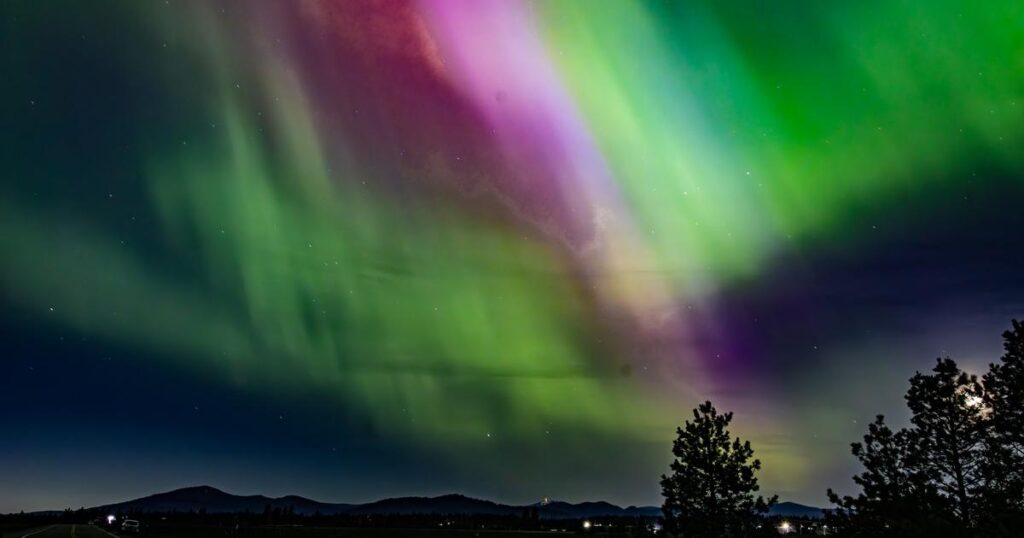The Met Office has shared that the “expected arrival of two Earth-directed Coronal Mass Ejections” gives the chance for visible aurora
It shares that the aurora borealis may also be visible further south, as well as in the north of England.
If you want to catch a glimpse of the Northern Lights, here is everything you need to know, including the best places to see them and how best to spot and photograph them.
Northern Lights could be visible across London tonight
The Space Weather Forecast from the Met Office reads: “The expected arrival of two Earth-directed Coronal Mass Ejections (CMEs) later on Tuesday and into Wednesday (November 11 and 12) is likely to bring the potential for visible aurora across parts of northern UK and similar geomagnetic latitudes, given clear skies.
“Visible aurorais perhaps possible further south given ideal viewing conditions and equipment.
“Activity then becoming more generally restricted to higher latitudes into Thursday and Friday (November 13 and 14).”
The Northern Lights being spotted in London is a rare occurrence due to being in the very south of England.
What causes the Northern Lights?
Also known as the aurora borealis, the Northern Lights are caused by charged particles from the sun hitting gases in the Earth’s atmosphere.
The colours occur due to different gases in the Earth’s atmosphere being energised by the charged particles.
Nitrogen and oxygen are the two most common gases in the atmosphere, with nitrogen emitting purple, blue and pink colours and oxygen emitting green.
The Royal Museums Greenwich explained: “Solar storms on our star’s surface give out huge clouds of electrically charged particles.
Recommended Reading
“These particles can travel millions of miles, and some may eventually collide with the Earth.
“Most of these particles are deflected away, but some become captured in the Earth’s magnetic field, accelerating down towards the north and south poles into the atmosphere. This is why aurora activity is concentrated at the magnetic poles.”
Between 9pm and 2am is the peak time you can expect to see the Northern Lights.




